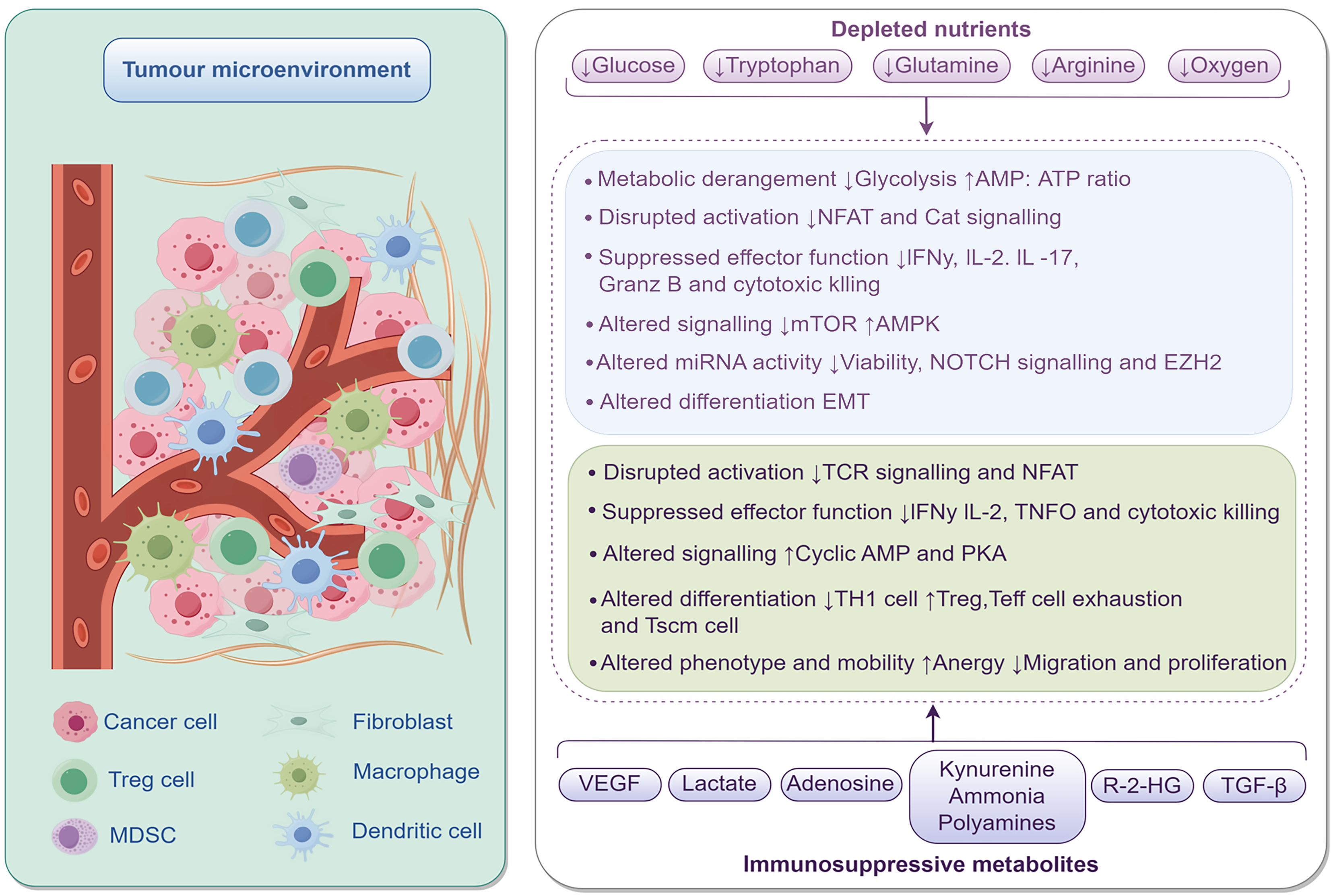Copyright
©The Author(s) 2025.
World J Gastrointest Oncol. Jul 15, 2025; 17(7): 107589
Published online Jul 15, 2025. doi: 10.4251/wjgo.v17.i7.107589
Published online Jul 15, 2025. doi: 10.4251/wjgo.v17.i7.107589
Figure 1 The tumor microenvironment.
Tumor microenvironment contains various cell types such as cancer cells, fibroblasts, Treg cells, macrophages, myeloid-derived suppressor cells, and dendritic cells. In the tumor microenvironment, nutrients like glucose and tryptophan are depleted, triggering a series of changes: Metabolically, glycolysis is inhibited and the adenosine monophosphate (AMP): Adenosine triphosphate ratio increases; Activation signaling pathways such as nuclear factor of activated T cells are disrupted; In terms of effector function, the secretion of interferon γ, interleukin-2, etc. and cytotoxic killing function are suppressed; Signaling pathways including mammalian target of rapamycin, adenosine 5’-monophosphate-activated protein kinase, as well as the cyclic AMP and protein kinase A system pathways are altered; Micro-RNA activity affects cell viability, etc.; Cell differentiation shows changes like epithelial-mesenchymal transition; Phenotype and migration exhibit alterations such as anergy. Meanwhile, immunosuppressive metabolites such as vascular endothelial growth factor and lactate are present in the tumor microenvironment. MDSC: Myeloid-derived suppressor cells; AMP: Adenosine monophosphate; ATP: Adenosine triphosphate; NFAT: Nuclear factor of activated T cells; IFN: Interferon; IL: Interleukin; mTOR: Mammalian target of rapamycin; AMPK: Adenosine 5’-monophosphate-activated protein kinase; EMT: Epithelial-mesenchymal transition; TCR: T cell receptor; PKA: Protein kinase A system; VEGF: Vascular endothelial growth factor; TGF: Transforming growth factor.
- Citation: Xu ZX, Qu FY, Zhang Z, Luan WY, Lin SX, Miao YD. Exploring the role of neutrophil extracellular traps in colorectal cancer: Insights from single-cell sequencing. World J Gastrointest Oncol 2025; 17(7): 107589
- URL: https://www.wjgnet.com/1948-5204/full/v17/i7/107589.htm
- DOI: https://dx.doi.org/10.4251/wjgo.v17.i7.107589









